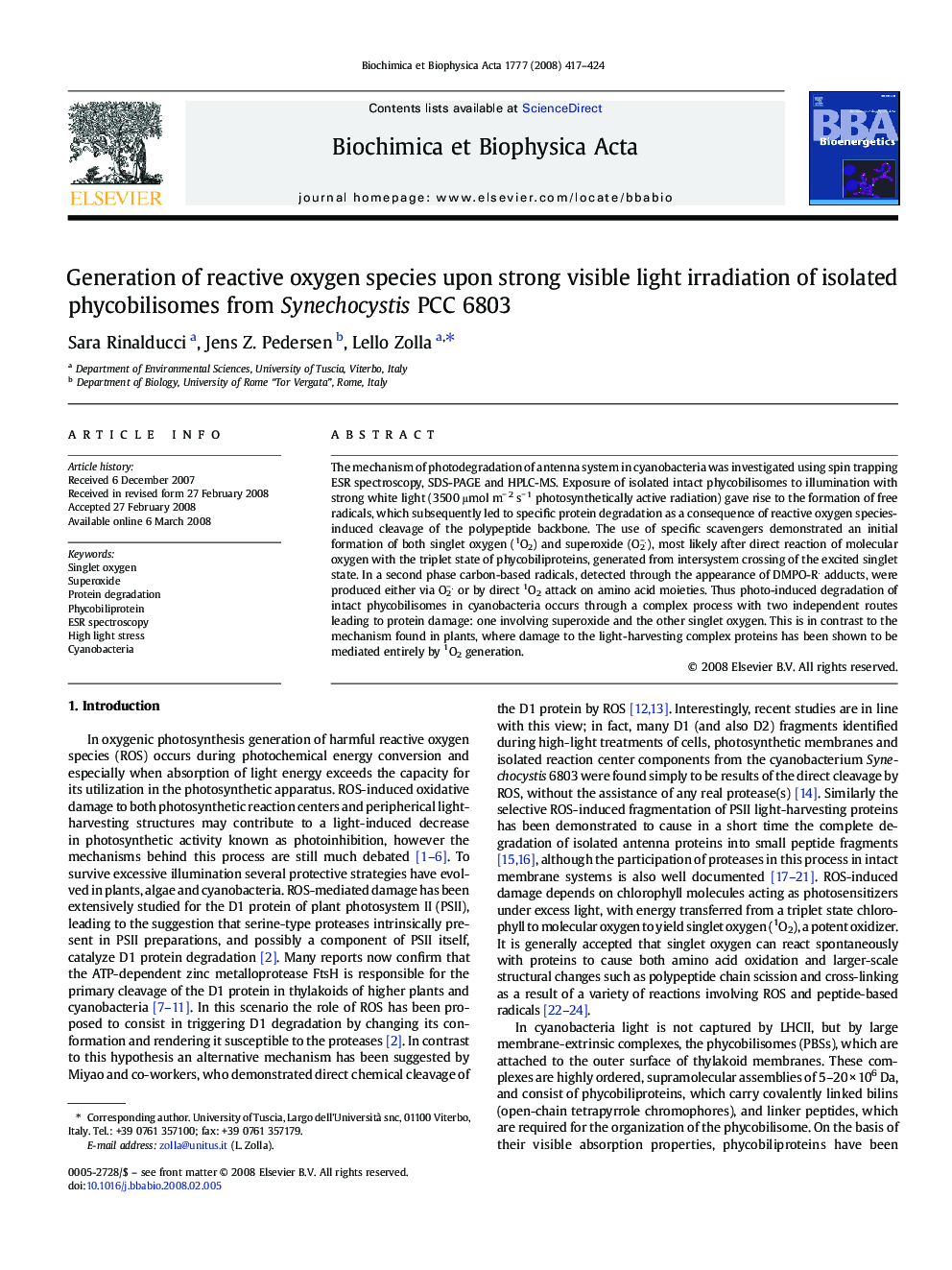| Article ID | Journal | Published Year | Pages | File Type |
|---|---|---|---|---|
| 1943400 | Biochimica et Biophysica Acta (BBA) - Bioenergetics | 2008 | 8 Pages |
The mechanism of photodegradation of antenna system in cyanobacteria was investigated using spin trapping ESR spectroscopy, SDS-PAGE and HPLC-MS. Exposure of isolated intact phycobilisomes to illumination with strong white light (3500 μmol m− 2 s− 1 photosynthetically active radiation) gave rise to the formation of free radicals, which subsequently led to specific protein degradation as a consequence of reactive oxygen species-induced cleavage of the polypeptide backbone. The use of specific scavengers demonstrated an initial formation of both singlet oxygen (1O2) and superoxide (O2−), most likely after direct reaction of molecular oxygen with the triplet state of phycobiliproteins, generated from intersystem crossing of the excited singlet state. In a second phase carbon-based radicals, detected through the appearance of DMPO-R adducts, were produced either via O2− or by direct 1O2 attack on amino acid moieties. Thus photo-induced degradation of intact phycobilisomes in cyanobacteria occurs through a complex process with two independent routes leading to protein damage: one involving superoxide and the other singlet oxygen. This is in contrast to the mechanism found in plants, where damage to the light-harvesting complex proteins has been shown to be mediated entirely by 1O2 generation.
